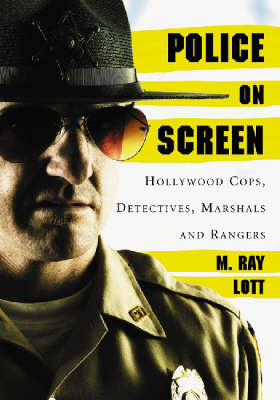
From the Roman Praetorian Guard to the English shire-reeve to the U.S. marshals, lawmen have a long and varied history. At first, such groups were often corrupt, guilty of advancing a political agenda rather than protecting citizens. It was about the turn of the twentieth century that police officers as we know them came into being. At this time, a number of police reforms such as civil service and police unions were developed. Citizen committees were formed to oversee police function. About this same time, the technology of motion pictures was being advanced. Movies evolved from silent films with a limited budget and short running time to films with sound whose budget was ever rising and whose audience demanded longer, more complex story lines. From the infancy of moviemaking, lawmen of various types were popular subjects. Bounty hunters, sheriffs, private eyes, detectives and street officers - often portrayed by some of Hollywood's biggest names - have been depicted in every conceivable way. Compiled from a comprehensive examination of the material in question, this volume provides a critical-historical analysis of law enforcement in American cinema. From ""High Noon"" to ""The Empire Strikes Back"", it examines the police in their many incantations with emphasis on the ways in which lawmen are portrayed and how this portrayal changes over time. Each film discussed reveals something about society, subtly commenting on social conditions, racial issues and government interventions. Major historical events such as the Great Depression, World War II and the McCarthy trials find their way into many of these films. Significant film genres from science fiction to spaghetti western are represented. Films examined include ""Easy Street"" (1917), a nominal comedy starring Charlie Chaplin; ""Star Packer"", a 1934 John Wayne film; ""The Maltese Falcon"" (1941) with Humphrey Bogart; ""Dirty Harry"", a 1971 Clint Eastwood classic; Leslie Nielsen's spoof ""Naked Gun"" (1988); and 1993's ""Tombstone"" featuring Kurt Russell. The filmography contains a synopsis along with information on director, screenplay, starring actors and year of production. Photographs and an index are also included.
| ISBN: | 9780786425778 |
| Publication date: | 30th April 2006 |
| Author: | M. Ray Lott |
| Publisher: | McFarland & Co Inc |
| Format: | Paperback |
| Pagination: | 222 pages |
| Genres: |
Films, cinema |